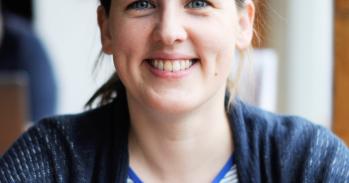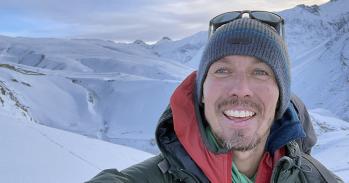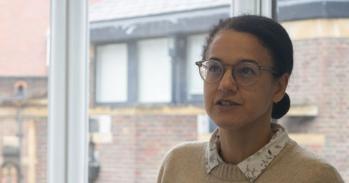
Dr Natasha Morrison is a Research Fellow in mathematics at Sidney Sussex College and a member of the Department of Pure Mathematics and Mathematical Statistics. She completed her PhD at Oxford and her undergraduate studies at Durham. Her research focuses on a branch of mathematics which models the behaviours of networks, from how diseases spread to how viral stories circulate on social media.
Dr Natasha Morrison is a Research Fellow in mathematics at Sidney Sussex College and a member of the Department of Pure Mathematics and Mathematical Statistics. She completed her PhD at Oxford and her undergraduate studies at Durham. Her research focuses on a branch of mathematics which models the behaviours of networks, from how diseases spread to how viral stories circulate on social media.
I study the structure and properties of networks. One area of my research concerns the ‘bootstrap percolation process’ which can be thought of as a model of the spread of disease on a network. Mathematical results about this process have impacts on many other disciplines, including physics, computer science and sociology. For example, it has been used to model the way opinions spread through a social network, or model neural networks.
Imagine a social network. The people in this network can be represented by a set of nodes, and if two of the people are close friends, the nodes are connected - this can be represented by a line between the nodes. If some people in this network catch a contagious disease, then this disease may spread throughout the network. The bootstrap percolation process obeys the following rules: a particular set of people are infected initially, and if a person is not infected they are healthy. In this model, once someone is infected they remain infected forever. If a person is connected to at least two infected people, they also become infected. The process stops when it is not possible for anyone new to become infected.
I study questions about this process and related processes on a variety of different networks. I hope my research will lead to progress on a number of exciting and important conjectures in combinatorics, the branch of mathematics I work in. At the end of my fellowship I hope to be able to secure a permanent academic position.
I spend a lot of time thinking about mathematical problems. This generally involves staring at a sheet of paper or a board, and thinking about and discussing them with other mathematicians. Learning about other peoples’ methods and results is also helpful, as perhaps those techniques can be applied to what I am working on. Once we have solved a problem, we then try to write it up in a paper - and this is probably what takes up most of my time. I also do various sorts of teaching and some outreach in schools and in college. My research has also given me the opportunity to travel all over the world. I have been to conferences in a number of exciting locations, including Brazil, France and Israel, and I have been on research visits to work with mathematicians at other institutions.
Cambridge is a world-class university for mathematics. There are so many incredibly intelligent, lovely people in my field here to collaborate with. I really enjoy being part of a college community and I find my colleagues in college incredibly helpful and supportive towards my work.

The text in this work is licensed under a Creative Commons Attribution 4.0 International License. Images, including our videos, are Copyright ©University of Cambridge and licensors/contributors as identified. All rights reserved. We make our image and video content available in a number of ways – as here, on our main website under its Terms and conditions, and on a range of channels including social media that permit your use and sharing of our content under their respective Terms.




